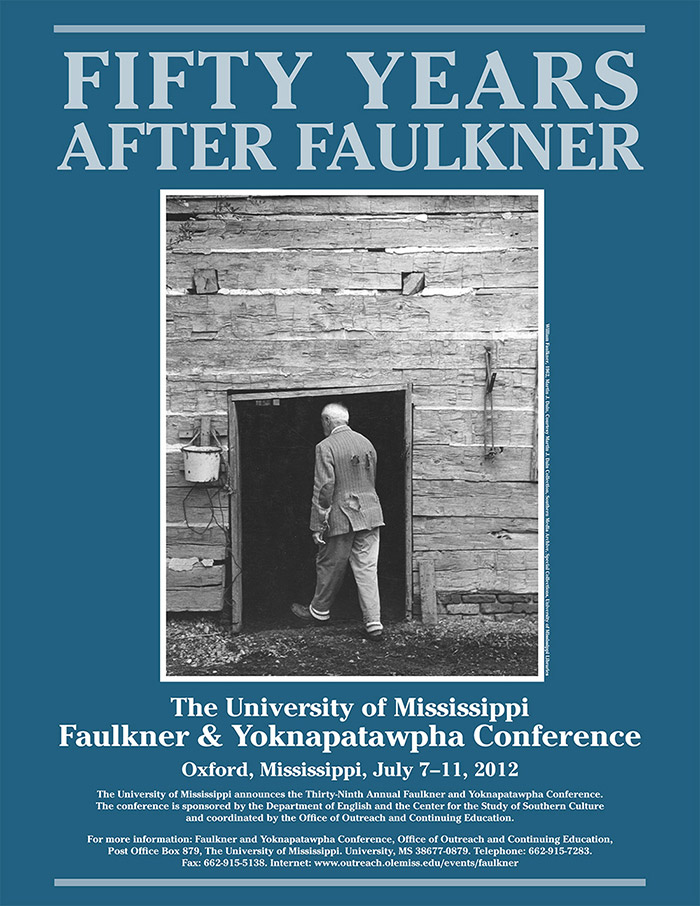
Born Again: Faulkner and the Second Birth
Location
Nutt Auditorium
Start Date
8-7-2012 2:30 PM
Description
When DuBois formulated his concept of “double consciousness,” he explicitly had in mind the psychic dilemma of historical subjects relatively new to the conditions of freedom. By 1903, the year of the publication of DuBois’s Souls of Black Folk, where his “double consciousness” is elaborated, African-Americans were entering their second generation of emancipation; about seven years later, Faulkner’s Quentin Compson will enter the freshman class at Harvard University, and in the course of that fateful year will rehearse and hear rehearsed the narrative of his grandfather’s good friend, Thomas Sutpen; but in the astonishing course of Absalom, Absalom! Sutpen “becomes” Sutpen only when he discovers something akin to “class,” as the black servant drives the small barefoot white boy away from the front door of the Big House. We would be justified in calling the epiphany that violently strikes the consciousness of Sutpen a “second birth,” the next step that the subject takes after the first one. “ ‘Born Again’ “ explores the implications of the “second birth” for this writing and its relationship to the DuBoisian “double consciousness.”
Relational Format
Conference proceeding
Recommended Citation
Spillers, Hortense J., "Born Again: Faulkner and the Second Birth" (2012). Faulkner and Yoknapatawpha Conference. 4.
https://egrove.olemiss.edu/fy/2012/schedule/4
Born Again: Faulkner and the Second Birth
Nutt Auditorium
When DuBois formulated his concept of “double consciousness,” he explicitly had in mind the psychic dilemma of historical subjects relatively new to the conditions of freedom. By 1903, the year of the publication of DuBois’s Souls of Black Folk, where his “double consciousness” is elaborated, African-Americans were entering their second generation of emancipation; about seven years later, Faulkner’s Quentin Compson will enter the freshman class at Harvard University, and in the course of that fateful year will rehearse and hear rehearsed the narrative of his grandfather’s good friend, Thomas Sutpen; but in the astonishing course of Absalom, Absalom! Sutpen “becomes” Sutpen only when he discovers something akin to “class,” as the black servant drives the small barefoot white boy away from the front door of the Big House. We would be justified in calling the epiphany that violently strikes the consciousness of Sutpen a “second birth,” the next step that the subject takes after the first one. “ ‘Born Again’ “ explores the implications of the “second birth” for this writing and its relationship to the DuBoisian “double consciousness.”

